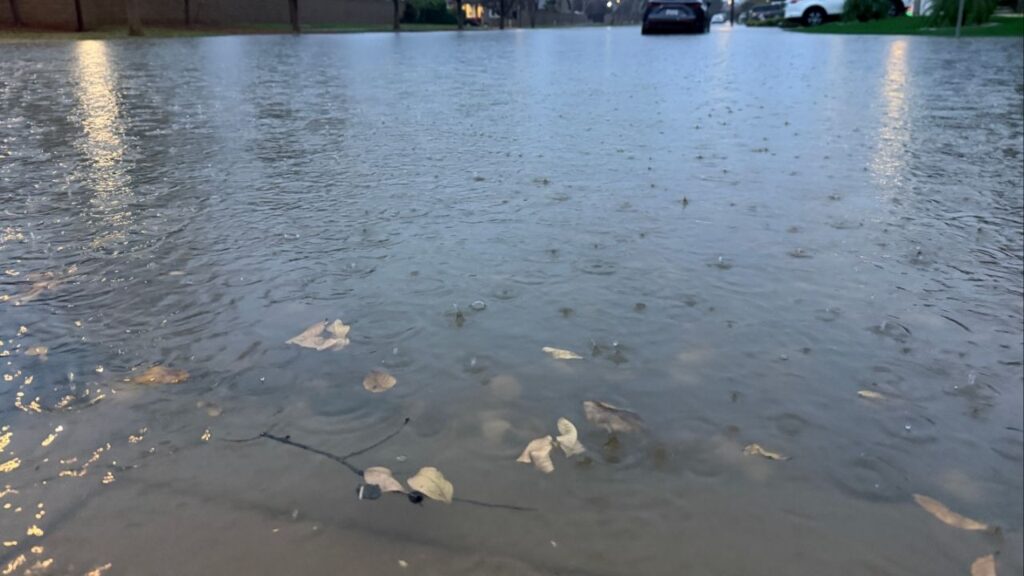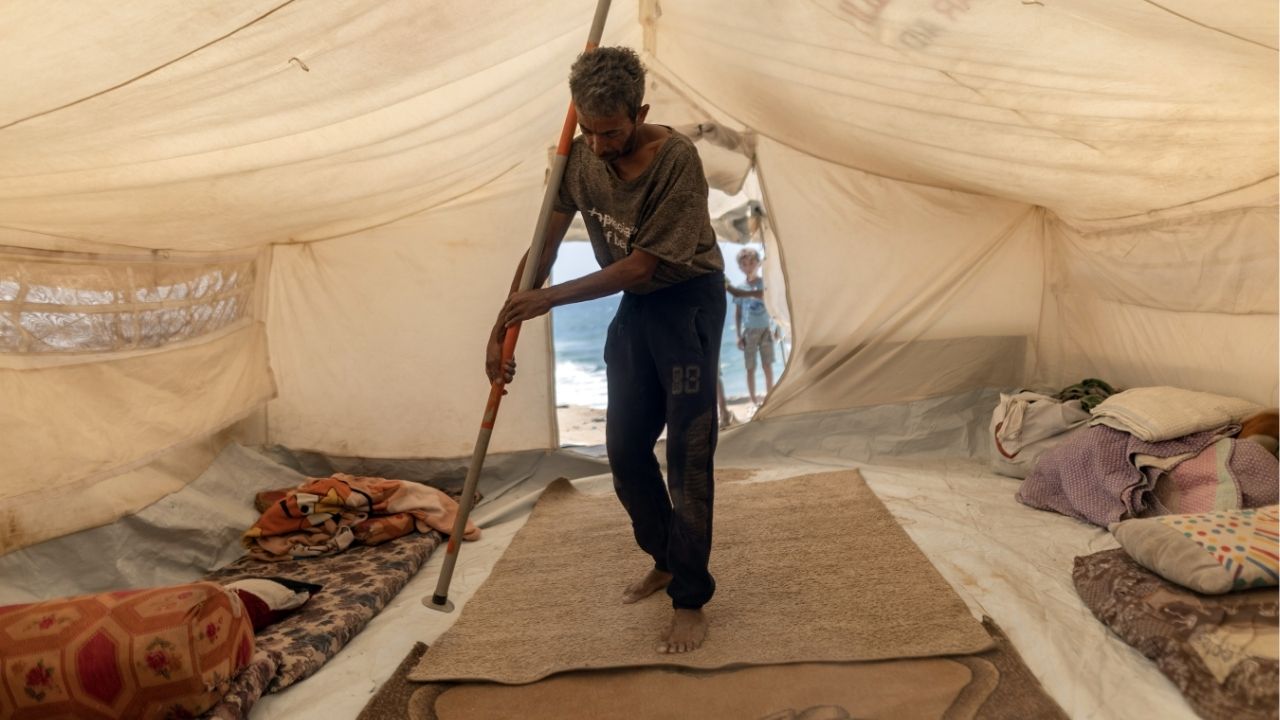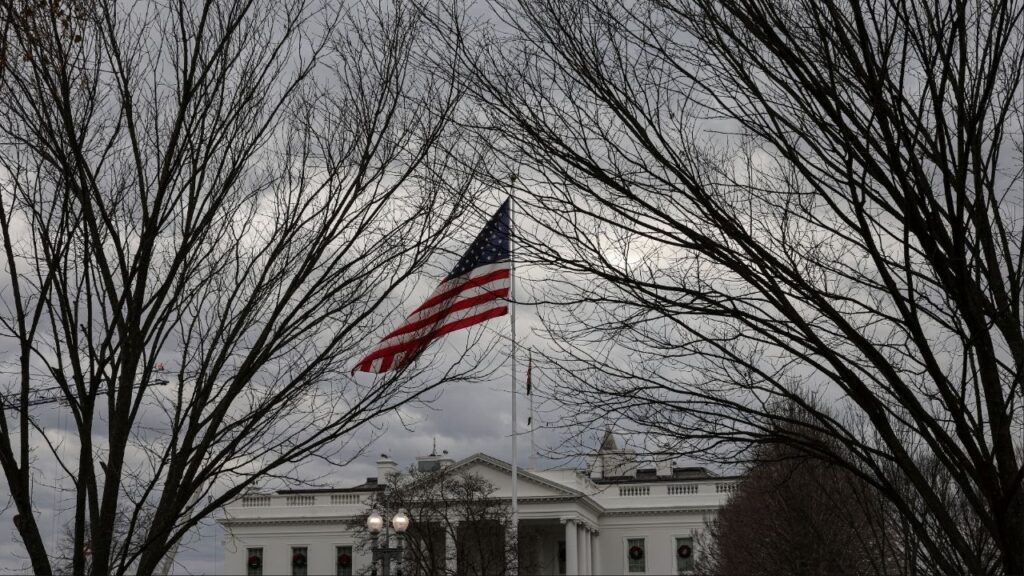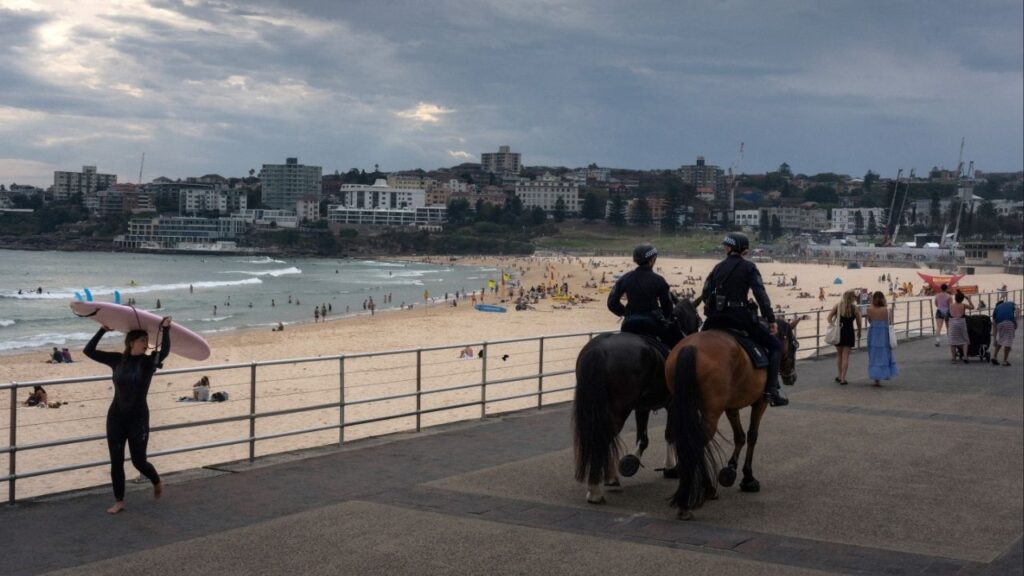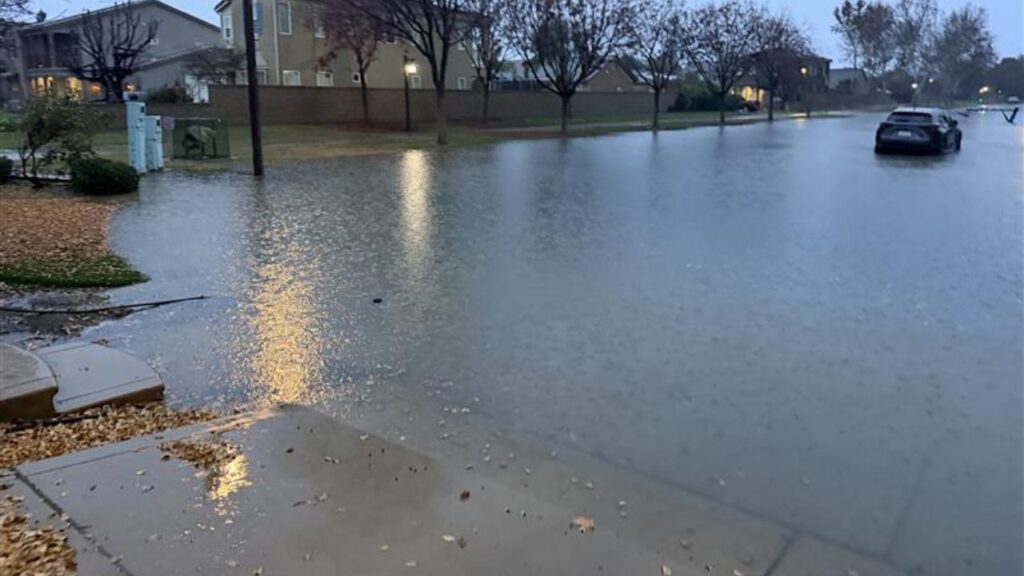Bassem al-Qedra, 43, the father of six children, pitches a tent after securing a spot at the al-Mawasi camp near Khan Younis, Gaza Strip, on Wednesday, Sept. 17, 2025. Amid the Israeli military’s ground assault on Gaza City, the huge influx of Gazans fleeing to the south has further strained humanitarian services that aid groups say were not sufficient even before the arrival of many thousands more. (Saher Alghorra/The New York Times)

- Israel’s Gaza City offensive has displaced 780,000, overwhelming humanitarian zones where aid groups report severe shortages and disease.
- U.N. says Israeli restrictions and theft have crippled aid deliveries, leaving hospitals closed and malnourished children without treatment.
- Trump and Netanyahu backed a ceasefire plan promising “full aid,” but uncertainty remains as conditions in Gaza deteriorate rapidly.
Share
|
Getting your Trinity Audio player ready...
|
TEL AVIV, Israel — As Israel’s full-scale assault in Gaza City began last month, Khitam Ayyad fled from her home there barefoot and without her possessions, heading to an area in southern Gaza that the Israeli military had designated as a “humanitarian zone.”
The military said that tents, food and medical care would be provided to those fleeing the fighting in the north.
But when Ayyad reached the southern city of Khan Younis, one of the humanitarian areas, she said she found it overcrowded with desperate people who were being offered little help.
“We are exposed to the sun and the heat,” she said. There was no space for her to build a shelter, she added, and “no proper food or water.”
The Israeli military has said that its ground assault to take control of Gaza City, which began Sept. 16, is an effort to rout one of the last remaining Hamas strongholds in the Gaza Strip.
Before the operation, the military said the humanitarian infrastructure in southern Gaza was prepared for “the expected population volume moving from northern Gaza.”
This week, the military said 780,000 people had left Gaza City since an evacuation order was issued Sept. 9.
The huge influx of Palestinians into the south has further strained humanitarian services that aid groups say were not sufficient even before the arrival of thousands more people.
Olga Cherevko, a spokesperson for the United Nations’ humanitarian office who is working in a designated humanitarian zone, said there were “hundreds of people just sitting on the side of the road looking shell-shocked, without anything.”
On Monday, President Donald Trump and Prime Minister Benjamin Netanyahu of Israel backed a proposal to end the war, which was ignited by a Hamas-led attack on southern Israel on Oct. 7, 2023. The plan stated that “full aid” would be sent “immediately” to Gaza once the plan went into effect, but it remained unclear if Hamas would accept the deal.
The Israeli military agency that coordinates aid to Gaza, known as COGAT, reiterated that the humanitarian facilities in the south were prepared for the new arrivals. “Accordingly, the transfer of food, medical equipment and shelter supplies has been increased,” COGAT said in a statement on Sept. 25. “Steps have been taken in the fields of water and medical response in the southern Gaza Strip.”
But two weeks into the offensive, there appeared to be little sign of that infrastructure, a visit by a New York Times photographer to the humanitarian zone showed and Palestinians and aid groups said in interviews. They said the facilities there were far from sufficient.
“The hospitals are completely overflowing,” Cherevko said. “The water production is at some of the lowest levels that we’ve ever seen. There’s all kinds of diseases.”
Since the ground offensive in Gaza City began, aid agencies say, efforts to alleviate a worsening humanitarian crisis across Gaza have been plunged into chaos.
In the north, where hundreds of thousands of people are still sheltering in Gaza City, the delivery of food and aid has been severely disrupted, aid agencies say.
The U.N.’s humanitarian office said the Israeli military closed the Zikim crossing on Sept. 12, days before the Gaza City operation began, cutting off an important entry point for aid and goods.
When asked about the closure, the Israeli military said the entry of aid trucks through Zikim was “subject to operational considerations.”
The U.N. said Israeli authorities had also denied or impeded about half of its attempts to bring aid from the south to the north of Gaza in recent weeks. That, Cherevko said, had severely hampered the work of community kitchens in the north, meaning they were able to prepare about a third of the meals they had before the offensive.
The Israeli military said in a statement that aid deliveries from southern to northern Gaza were “facilitated through internal coordination” between itself and aid groups, and that the delivery of aid “continues on an ongoing basis.”
Israel’s ground offensive in Gaza City has also devastated health care there.
On Wednesday, the Red Cross said it would suspend operations and move its staff out of the city, days after Doctors Without Borders, a medical charity, announced a similar move saying that Israeli forces had “encircled” their facilities. Over the weekend, the U.N. said that fighting had rendered four hospitals in the north unusable over the past month.
Before the Gaza City offensive, UNICEF delivered specialized treatment for malnourished children to northern Gaza twice a week, but it has delivered only one since the offensive began, said Tess Ingram, a spokesperson for UNICEF. And last week, the U.N. said in a report that it had succeeded in getting a shipment of malnutrition treatment into Gaza City, only to have the supplies, which included enough treatment for 2,700 children, stolen by armed men.
The U.N. said that 73% of the aid entering Gaza in September had been stolen from its trucks by desperate civilians or armed gangs. Some of that pilfered aid is then sold in local markets across the territory for inflated prices.
In Gaza City, some markets had stayed open in the earliest days of the Israeli ground offensive as vendors tried to off-load their stocks before they fled. But residents said many markets now appeared to be closed or picked clean.
Amani al-Hessi, 40, a journalist for Al Madina, an Arabic-language newspaper based in Israel who was sheltering in a badly damaged house in Gaza City, said there was nowhere left to buy food in her area.
“I went yesterday to what used to be the market in Shati, but no one was selling a thing there,” she said, referring to one of Gaza City’s neighborhoods. “We have food enough for one more week at best.”
—
This article originally appeared in The New York Times.
By Liam Stack/Saher Alghorra
c. 2025 The New York Times Company
RELATED TOPICS:
Categories

Fresno Man Dies After Being Shot by Neighbor, Police Allege

Fresno Underpass Closed Due to Flooding
